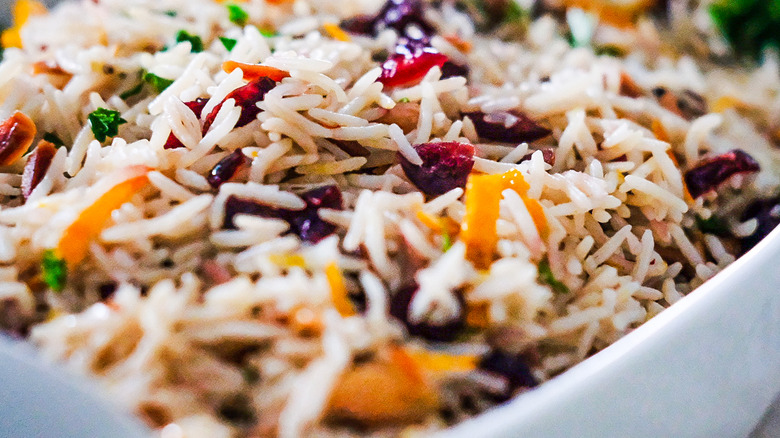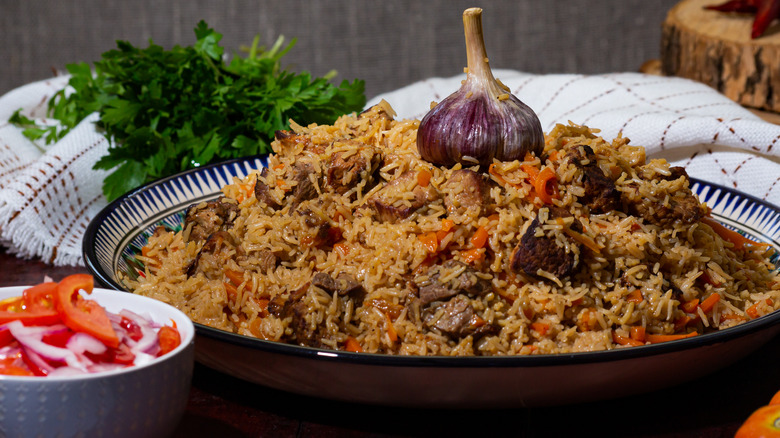Pilaf Isn't Just A Dish, It's Also A Cooking Method
On American menus, rice pilaf is often merely considered a fancier name for rice that is sometimes served with another ingredient. Lemon rice pilaf is a lovely side dish where the rice is cooked with onion and garlic before a broth is added, but pilaf itself is actually a cooking method. The resulting range of dishes that can be called pilaf is so extensive that some pilaf-based recipes may not even contain rice.
Pilaf is inherently a style of cooking that appears all around the world, popping up in Middle Eastern, Mediterranean, European, South Asian, and South American cuisine. Pilaf also has a much longer history than you may expect — while almond rice pilaf may be a staple on an Applebee's menu today, pilaf has been eaten for centuries. Let's dive into this culturally diverse method of cooking rice that has been around for over two thousand years.
The early origins of pilaf and its transformation into a modern-day dish
The word pilaf itself stems from the Turkish word pilav which derives from the Persian word pilaw, reflecting the widely accepted notion that pilaf has origins in Persia. During the 8th and 9th centuries, pilaf was made over a fire and with barley — a dish favored by nomadic sheep herders. Soon after, the first written recipe for pilaf was recorded during the 10th century by Abu Ali Ibn Sina, a Persian scholar also known as the "father of modern pilaf." However, nearly a thousand years prior to that, Alexander the Great, post-conquest, purportedly spread pilaf from modern-day Uzbekistan to Macedonia and Eastern Europe.
Clearly, the taste for pilaf was appreciated upon its arrival in other countries, though the name of this cooking method morphed in each culture that received it. It also goes by pulao (India), pilaw (Turkey), plov (Russia, Uzbekistan, and Tajikistan), and pelau (Trinidad and Tobago). Other variations of pilaf have become the Spanish paella and the Italian risotto.
What is the pilaf cooking method?
In Persian, pilaf translates loosely to "a dish of grains that have been cooked in stock", and at the core, the cooking method results in rice with grains that don't stick together, in contrast to a creamy risotto. Another characteristic of the pilaf cooking method is that the rice grains are first toasted in oil or butter before being cooked in a broth. In plov, which is the national pilaf dish of Uzbekistan, rice is toasted with meat and vegetables in a dutch oven before the broth is added to turn the rice into fluffy grains.
To use the pilaf method of cooking rice for fluffy grains, start with oil or butter in a pan with diced onion, then add your rice grains until each one is slick with your fat, and then toast. The process of coating each rice grain is called "pearling", and the grease layer allows each individual grain to remain so even when cooked. Et voilà, pilaf: not just a dish but means to an end of fluffy rice.


